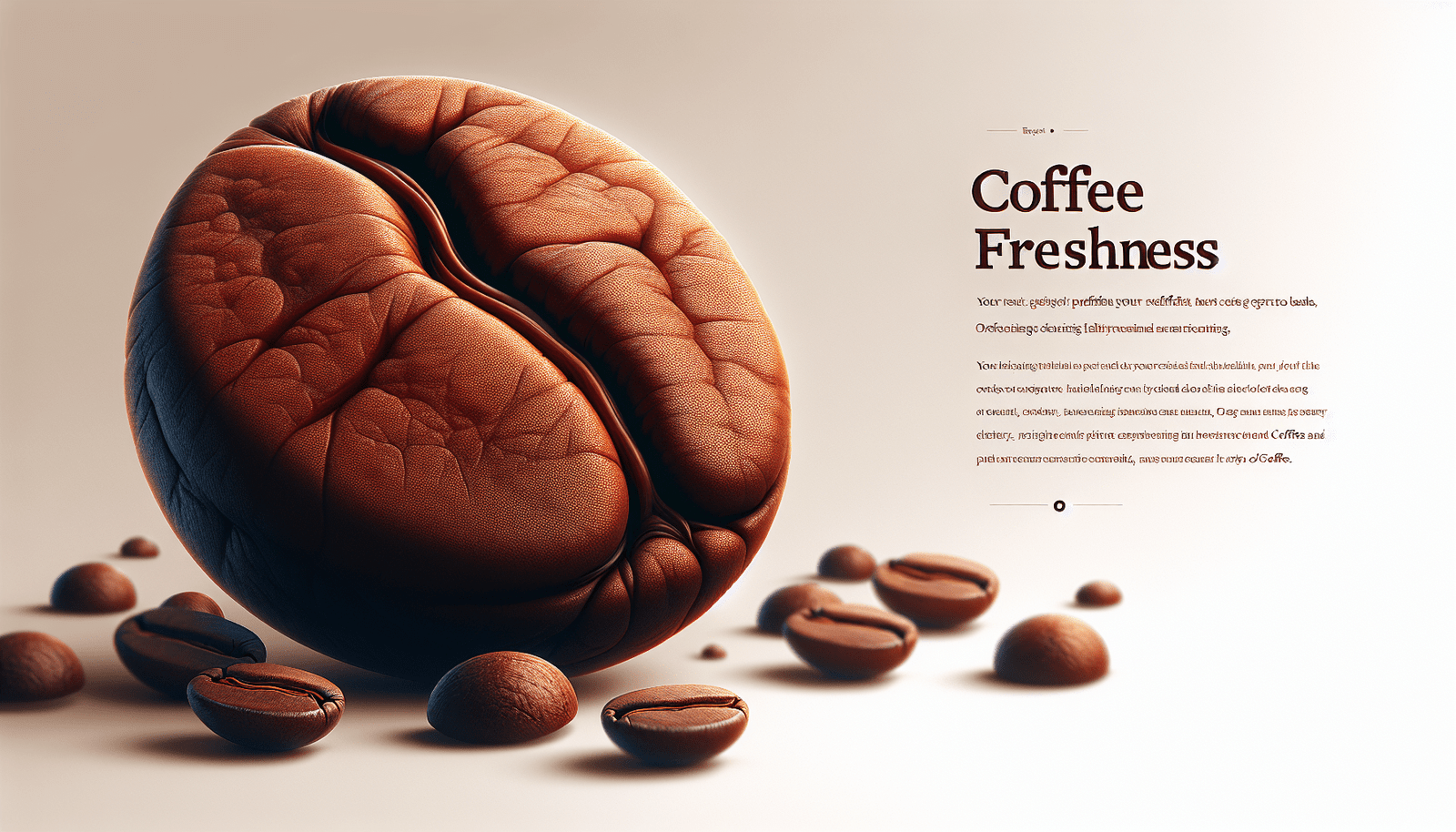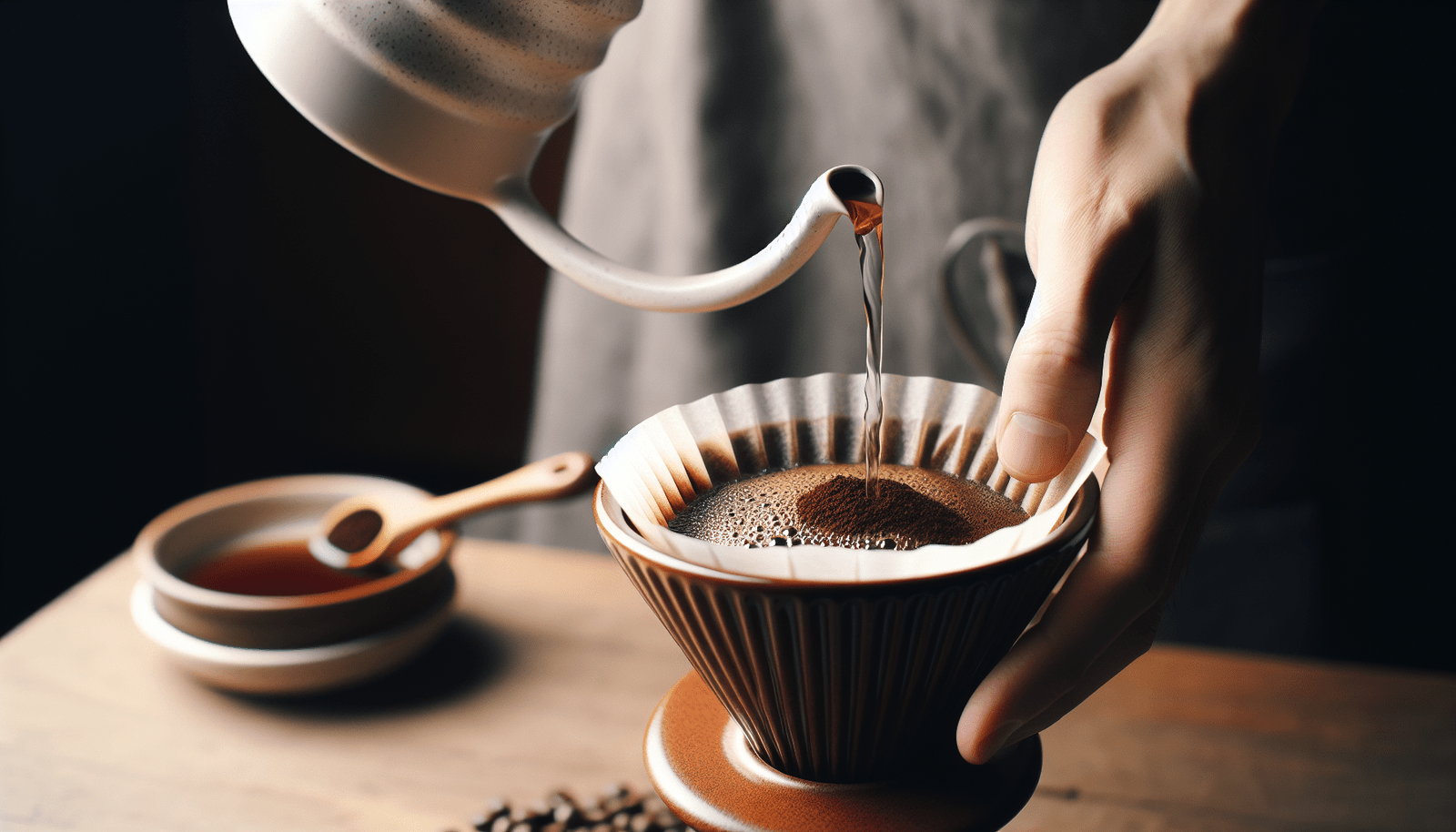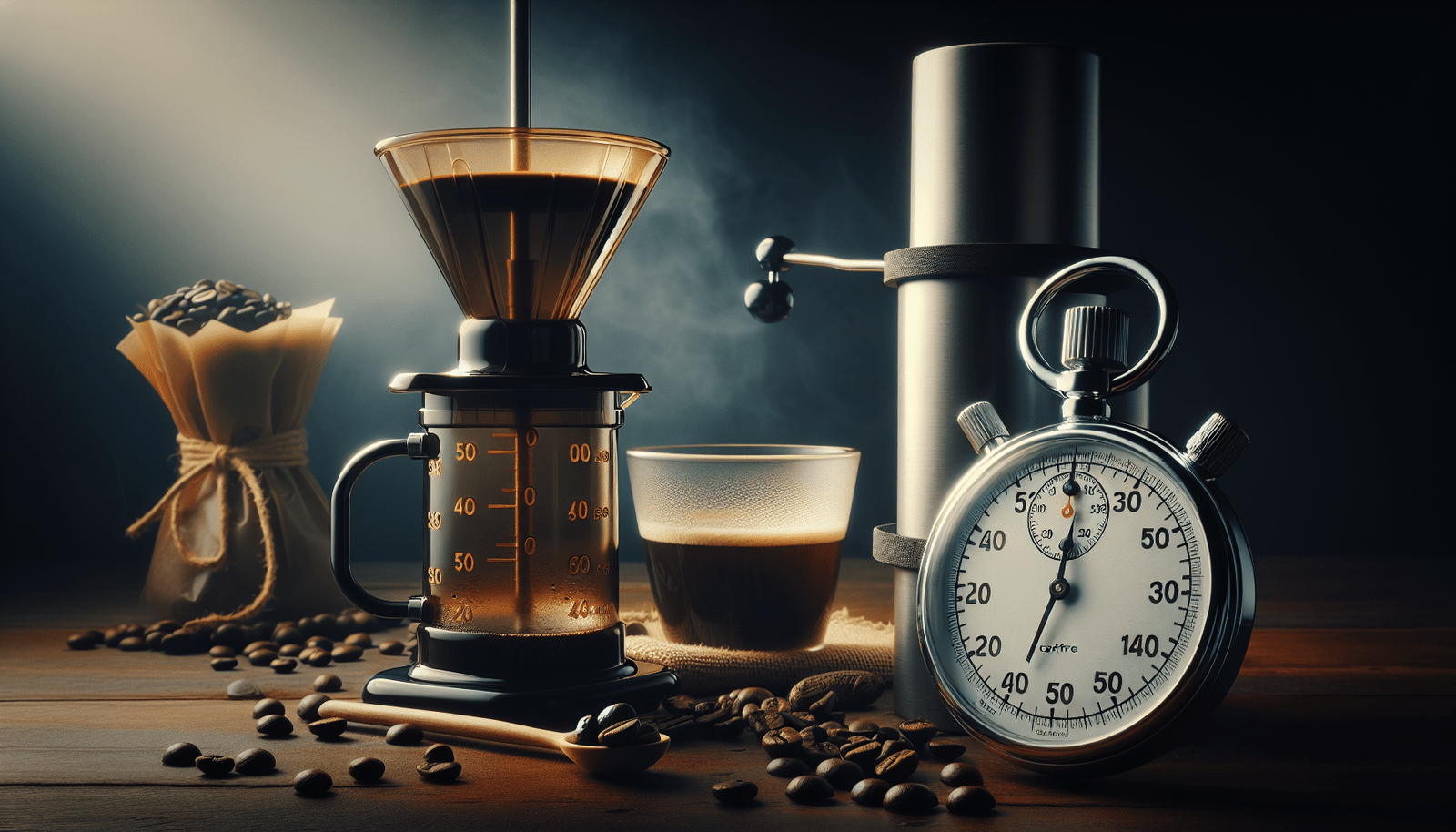Whether you’re an avid coffee connoisseur or just starting your journey into the world of brewing, you may have wondered about the impact of grind size on the flavors of your favorite cup of joe. In the realm of single grind coffee, the question arises: does the grind size vary for different brewing devices? The answer may surprise you, as we explore the fascinating relationship between grind size and brewing methods and how it can affect the taste and quality of your morning brew. So grab your favorite mug and prepare to uncover the secrets behind the perfect grind size for your preferred brewing device.
Overview of Single Grind Coffee
Definition of single grind coffee
Single grind coffee refers to the process of grinding coffee beans to a specific size before brewing. The grind size is an essential factor that determines the extraction rate and flavor of the coffee. It refers to the coarseness or fineness of the coffee particles, which affects how quickly water can pass through the coffee grounds during brewing.
Importance of grind size in coffee brewing
The grind size plays a crucial role in coffee brewing because it directly affects the extraction process. When water comes into contact with the coffee grounds, it extracts the soluble compounds that contribute to the aroma, flavor, and body of the coffee. The surface area of the coffee grounds, which is determined by the grind size, influences the rate of extraction. If the grind size is too fine, the extraction will be quick and may result in over-extracted, bitter coffee. On the other hand, if the grind size is too coarse, the extraction will be slow and may lead to under-extracted, weak coffee.
Factors Affecting Grind Size
Extraction time
The extraction time refers to the duration for which water is in contact with the coffee grounds during brewing. A longer extraction time requires a finer grind size to ensure sufficient extraction of flavors. Conversely, a shorter extraction time requires a coarser grind size to prevent over-extraction.
Brewing method
Different brewing methods require specific grind sizes to achieve the desired flavor profile. For example, a French Press requires a coarser grind size to accommodate the longer extraction time, while an espresso machine demands a finer grind size to facilitate the short brewing time and pressure.
Coffee bean characteristics
The characteristics of coffee beans, such as their origin, roast level, and density, can also influence the grind size. Beans from different origins may require slightly different grind sizes to optimize extraction. Additionally, lighter roasts may benefit from a coarser grind size to enhance the clarity of delicate flavors, while darker roasts may necessitate a finer grind size to maximize extraction.
Equipment used
The type and quality of the brewing equipment also impact the grind size. Some devices, like burr grinders, provide more control over the grind size and produce more consistent results. Blade grinders, on the other hand, may produce uneven particle sizes, leading to less predictable extraction and flavor.
Different Brewing Devices and Their Grind Size Requirements
French Press
The French Press brewing method involves steeping coffee grounds in hot water for several minutes before pressing down a plunger to separate the grounds from the liquid. It requires a coarse grind size to prevent small particles from passing through the mesh filter and causing a gritty texture in the final brew.
Pour-over
Pour-over brewing involves pouring hot water over a bed of coffee grounds in a filter cone. This method typically requires a medium-fine grind size to balance the extraction time and ensure optimal flavor. The water flow rate and control exerted during pouring also contribute to the overall quality of the brew.
Espresso Machine
Espresso brewing is a fast and intense method that uses high-pressure water to extract the flavors from finely ground coffee. Espresso machines require a very fine grind size to increase the surface area for extraction and to achieve the desired concentration and intensity of flavors.
Aeropress
The Aeropress brewing method combines elements of immersion and pressure to create a robust yet smooth cup of coffee. The optimal grind size for Aeropress is generally slightly coarser than espresso but finer than pour-over. This allows for a quicker extraction time while still maintaining the desired strength and flavor clarity.
Cold Brew
Cold brew is a slow and gentle brewing process that involves steeping coffee grounds in cold or room temperature water for an extended period, typically overnight. The grind size for cold brew is coarser than other methods to compensate for the longer brewing time and create a smooth, less acidic flavor profile.
French Press
Description of the French Press brewing method
The French Press, also known as a press pot or plunger pot, is a classic and straightforward brewing method. It consists of a cylindrical glass or metal container with a metal mesh filter attached to a plunger. The brewing process involves adding coarsely ground coffee to the container, pouring hot water over it, and allowing it to steep for a few minutes. Afterward, the plunger is pressed down slowly to separate the brewed coffee from the grounds.
Optimal grind size for French Press
The optimal grind size for French Press is coarse. Since the coffee grounds are steeped in water for an extended period, a coarse grind prevents over-extraction. If the grind size is too fine, the particles may pass through the mesh filter and end up in the final cup, resulting in a gritty texture.
Effects of using finer or coarser grind in a French Press
Using a finer grind size in a French Press can lead to over-extraction, resulting in bitter and overbearing flavors. On the other hand, using a coarser grind size can result in under-extraction, producing a weak and watery brew. Finding the right balance is essential to achieving a well-extracted, flavorful cup of coffee.
Tips for achieving the right grind size
To achieve the right grind size for a French Press, aim for a consistency similar to coarse sea salt. Adjust the grind size according to taste preferences and brewing variables. If the coffee tastes too bitter or strong, try using a slightly coarser grind. If it tastes weak or lacks flavor, experiment with a slightly finer grind. Fine-tuning the grind size will help optimize the extraction and produce a more enjoyable cup of French Press coffee.
Pour-over
Description of the pour-over brewing method
Pour-over brewing involves pouring hot water evenly over a bed of coffee grounds held in a filter cone. The water filters through the grounds and drips into a receptacle below, resulting in a clean and bright cup of coffee. This method allows for precise control over variables such as water flow rate and extraction time.
Optimal grind size for pour-over
The optimal grind size for pour-over is typically medium-fine. This grind size allows for a balanced extraction, where the water passes through the grounds at a moderate pace, extracting the desired flavors without over or under-extracting. The resulting brew should have a clean and well-balanced flavor profile.
Effects of using finer or coarser grind in pour-over
Using a finer grind size in pour-over can accelerate the extraction process, resulting in a more intense and potentially over-extracted brew. Conversely, using a coarser grind size can slow down extraction, leading to a weaker and less flavorful cup. The grind size significantly influences the balance and strength of the final brew.
Tips for achieving the right grind size
To achieve the right grind size for pour-over, aim for a consistency similar to granulated sugar. However, slight variations may be necessary based on coffee bean characteristics and personal preference. Experimentation is key to finding the perfect balance of flavors. If the brew tastes bitter or overly strong, try using a slightly coarser grind. If it tastes weak or lacks complexity, adjust to a slightly finer grind.
Espresso Machine
Description of the espresso brewing method
Espresso brewing utilizes high-pressure water to quickly extract the flavors from finely ground coffee. The finely ground coffee is tightly packed into a portafilter, and high-pressure water is forced through it for a short duration, generally 25-30 seconds. This results in a concentrated and intense shot of coffee that forms the basis for various espresso-based drinks.
Optimal grind size for espresso
The optimal grind size for espresso is fine and powdery, much finer than most other brewing methods. It is crucial to achieve a consistent and homogeneous grind size to ensure proper extraction and prevent channeling, where water bypasses the coffee grounds and results in an uneven extraction.
Effects of using finer or coarser grind for espresso
Using a coarser grind size for espresso will cause the water to flow through the coffee grounds too quickly, resulting in under-extracted and weak coffee. Conversely, using a finer grind size will slow down the flow, allowing for proper extraction and yielding a stronger and more flavorful espresso shot.
Tips for achieving the right grind size
When dialing in the grind size for espresso, aim for a texture similar to powdered sugar. It should feel fine and clump-free when rubbed between fingers. Adjusting the grinder in small increments, based on taste and extraction time, can help find the ideal grind size. It may take some experimentation to achieve the desired balance between extraction time, flavor intensity, and shot volume.
Aeropress
Description of the Aeropress brewing method
The Aeropress is a versatile and compact brewing device that combines elements of immersion and pressure to create a flavorful cup of coffee. It consists of two cylindrical chambers, with a filter cap on one end and a plunger on the other. The coffee grounds and water are steeped together before being pressed through a filter by the plunger.
Optimal grind size for Aeropress
The optimal grind size for Aeropress is slightly coarser than espresso but finer than pour-over. This grind size allows for a relatively short brewing time while maintaining a robust and well-extracted cup of coffee. The pressure exerted by the plunger enhances the extraction process, contributing to a rich and flavorful brew.
Effects of using finer or coarser grind in an Aeropress
Using a finer grind size in an Aeropress can result in a quicker extraction, potentially leading to a more intense and concentrated flavor. Conversely, using a coarser grind size may result in a milder and less pronounced flavor profile. It’s important to find the right balance based on personal preference and desired strength of the brew.
Tips for achieving the right grind size
To achieve the right grind size for Aeropress, aim for a texture similar to table salt. However, individual preferences may vary, so it’s advisable to experiment with adjustments until the desired flavor profile is achieved. It’s essential to consider variables such as steeping time, water temperature, and coffee bean characteristics in conjunction with the grind size for optimal results.
Cold Brew
Description of the cold brew brewing method
Cold brew is a brewing method that involves steeping coffee grounds in cold or room temperature water for an extended period, usually overnight. The slow brewing process extracts the coffee’s flavors and oils while minimizing the extraction of compounds that contribute to bitterness and acidity. The result is a smooth and full-bodied coffee concentrate that is typically diluted before consumption.
Optimal grind size for cold brew
The optimal grind size for cold brew is coarser than that used for other brewing methods. This is because the longer brewing time compensates for the larger particle size, allowing for a gradual and gentle extraction of flavors. The coarse grind size helps prevent over-extraction, resulting in a mellow and less acidic cup of cold brew.
Effects of using finer or coarser grind in cold brew
Using a finer grind size in cold brew can lead to over-extraction and result in a more acidic and bitter brew. On the other hand, using a coarser grind size may result in under-extraction and produce a weaker and less flavorful cup. The grind size is integral to achieving the desired balance between extraction and flavor in cold brew.
Tips for achieving the right grind size
To achieve the right grind size for cold brew, aim for a texture similar to coarse sea salt. The coffee grounds should be large and uniform to allow for a gentle extraction over an extended period. Adjusting the grind size can help fine-tune the flavor profile, with coarser grinds leading to a milder brew and finer grinds resulting in a richer and more concentrated flavor.
Comparison of Grind Size Requirements
Overview of the grind size requirements for different brewing devices
The grind size requirements vary significantly across different brewing devices. French Press and cold brew require a coarse grind size, with French Press being slightly finer. Pour-over and Aeropress call for a medium-fine grind size, whereas espresso demands an extremely fine and consistent grind. Each brewing device has its unique set of variables that require careful consideration when selecting the appropriate grind size.
Commonalities and differences in grind size preferences
While there are general guidelines for grind size preferences, it’s important to note that personal taste and desired flavor profiles can influence the choice of grind size. Some individuals may prefer a slightly finer grind for pour-over to extract more nuanced flavors, while others may opt for a coarser grind to emphasize brightness and clarity. These preferences showcase the versatility and adaptability of grind size in achieving desired results.
Conclusion
Importance of grind size in coffee brewing
Grind size plays a crucial role in coffee brewing as it determines the rate of extraction and ultimately affects the flavor and quality of the final cup. It is essential to pay attention to grind size to achieve optimal flavor extraction while avoiding under or over-extracted results.
Adapting grind size to brewing device
Different brewing devices require specific grind sizes to optimize extraction and flavor. Understanding the unique requirements of each device allows coffee enthusiasts to tailor their brewing method to achieve the desired results.
Experimentation and personal preference
While guidelines exist for grind size preferences, experimentation and personal taste are essential in determining the ideal grind size for each individual. Adjustments to grind size can help fine-tune the flavor profile and achieve a more enjoyable cup of coffee. Don’t be afraid to try different grind sizes and brewing variables to discover the perfect balance of flavors that suits your palate.




